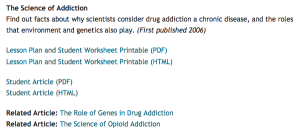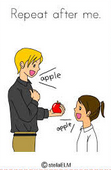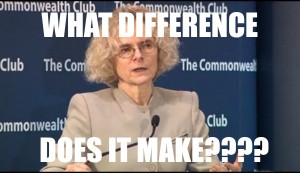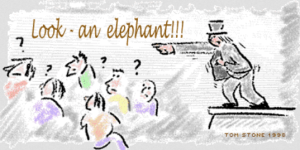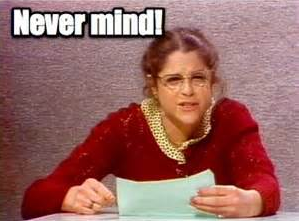It can be an effective technique for responding to tough questions, when the person being interviewed either doesn’t know, or doesn’t want to provide, the information requested. Simply dismiss the question and its relevance, by challenging the interviewer with, “What difference does it make?”
While Hillary Clinton didn’t invent the tactic, she did make it famous, during a dramatic scene at the 2013 Senate and House committee hearings on Benghazi. She was in the hot seat, responding (or not) to questions regarding the disastrous attack on the American diplomatic compound in Benghazi, Libya. When pressed for clarification of mixed reports, her reply, variously described as, “testy” – “explosive” – “defensive” and more, pretty much ended the discussion.
At least in my experience, such a response comes off as a passive-aggressive dodge, a rehearsed quip or jab pulled out of the media training toolbox to get a respondent out of a tight spot and off stage. Though it also can be used as a tool to turn the conversation in a different direction, as Mrs. Clinton attempted when she followed her “what difference does it make,” outcry with, “it is our job to figure out what happened and do everything we can to prevent it from ever happening again.”
But rarely does “what difference does it make” become a preamble to revealing greater truth. But as we’ll see in a bit, it happens.
I’m referring to some comments that were made in a discussion I’ll tell you about in a minute, regarding how we define addiction. Now please bear with me on this. While it might seem that we spend way too much time trying to define addiction, and not enough on figuring out what to do about it, I promise you, if we don’t properly address the first, the latter can be of little value. And though I thought that we’d covered the subject pretty well, I realized while talking with some readers that we hadn’t really addressed WHY the definition is worth all the fuss.
Yes. It’s Important.
When we talk about addiction, and get into the question of what addiction actually is – how it’s defined – there are a lot of people who probably think, Who cares about the words strung together in some definition? They might see the whole issue of defining addiction as an academic exercise in wordsmithing, when what’s really needed is a better way to treat it.
In fact today, most people will tell you they already know what addiction is. They can list the symptoms: Repeated use of drugs, alcohol, or other risky substances and behaviors, even when it’s no longer what they want; changes in mood, disposition and relationships; failure to meet responsibilities in work, school and at home; unsuccessful attempts to stop the behavior; and more.
Most Americans have had some form of drug education through schools, civic groups, church, or over the Internet. Beginning in elementary school, typically in second grade, they are taught that addiction is a chronic brain disease, that some people are genetically predisposed to addiction, and increasingly, curriculums include colorful brain scans claiming to prove it all[i].
Through a broad mix of public service announcements, in the general news and a parade of celebrity media stories, not to mention the growing number of reality television programs, talk show psychologists, and even a new sit-com addressing the issue, most Americans have learned about addiction and its treatment through the Alcoholics Anonymous Twelve Step Method. In fact most Americans and can name at least one of the method’s twelve steps.
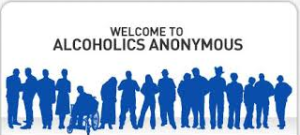 It would be tough for anyone in our society to avoid knowing something about addiction.
It would be tough for anyone in our society to avoid knowing something about addiction.
Today there are 14,000 addiction treatment facilities in the US alone[ii], nearly 60,000 Alcoholics Anonymous meetings[iii] and over 90,000 addiction therapists and counselors spread across the country, available at prices suited to every budget, all standing ready to help, nearly all with treatment based on the 12-step method for managing chronic addiction.
For the past 40 years, Americans have been bombarded with over a trillion dollars of spending on TV, radio, and film; 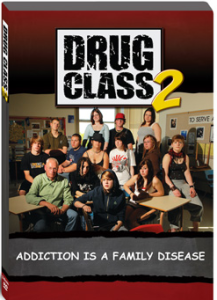 the story is told through billboards, posters, pamphlets, workbooks, and now Internet messaging of all types and forms, warning audiences of the dangers of addiction.
the story is told through billboards, posters, pamphlets, workbooks, and now Internet messaging of all types and forms, warning audiences of the dangers of addiction.
And though the stories and slogans have changed over the years, the message continues to focus on same three points:
- Addiction is a brain disease with roots in an improperly functioning brain system
- Addiction is chronic; no one can recover fully, and relapse is normal
- People with addiction require treatment to learn about their disease and how to manage it by adopting a sober lifestyle, and by seeking support from communities of others like them, living one day at a time, substance free, throughout their lives.
These are the industry’s key talking points, as well as the essence of its established addiction definition and treatment method.
The work of the $400 – $600 Billion addiction industry with its million-plus employees is guided by this premise, that after 80 years remains without objective support, while we stand by and watch the incidence and devastation of addiction climb without pause.
Perhaps one of life’s great understatements would be that Americans have been fed a lot of information about addiction. They’ve learned the right words, they know it’s a disease and that no one’s to blame.
They know about all the drugs and the risky behaviors. They can recognize the symptoms, and know when they see them, that it’s time for the person to get treatment.
They seem to have it covered.
So Am I Just Making A Mountain Out Of A Mole Hill?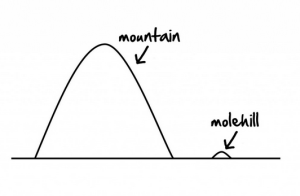 Given all that’s been taught, and all that’s in place and already operating to address these matters, you might be asking, aren’t I too late, or maybe just a bit behind the times, to keep jabbering on about the need to define addiction? In the end, is all this talk about definitions just that – a lot of talk? Of course that’s a possibility, but in this case no, I don’t think so.
Given all that’s been taught, and all that’s in place and already operating to address these matters, you might be asking, aren’t I too late, or maybe just a bit behind the times, to keep jabbering on about the need to define addiction? In the end, is all this talk about definitions just that – a lot of talk? Of course that’s a possibility, but in this case no, I don’t think so.
Because right now we have a massive addiction problem in this country that’s only growing worse. And we have a real opportunity, as well as the proper tools, ideas and talent, to finally tackle the problem and get moving toward a meaningful and positive solution.
And once again, you might be thinking, Great! So let’s move forward.  Enough with the definition. What possible difference could it make at this point, how addiction is defined?
Enough with the definition. What possible difference could it make at this point, how addiction is defined?
It’s a question I’ve asked myself umpteen zillion times, and one that has driven me back to the research and the models over and again, searching for a way to by-pass the whole definition controversy and get on with improving treatment. It’s the principle reason I’m so terribly late with this post. I do apologize.
I didn’t want to waste your time by making a mountain out of molehill. Yet at the same time I didn’t want to give up on what’s right, in order to pursue what’s easier and a lot more popular.
And through it all, I kept coming to the same conclusion.
We cannot effectively treat any form of addiction, in any kind of measurable way, unless and until we FIRST figure out what it is that we are treating. And we certainly cannot bring forward an effective way to help people break fully free of their addiction, while treating them for a condition defined as a chronic brain disease from which they can never fully recover.
And unfortunately, the challenge seems to be less a matter of disproving the content of the entrenched addiction premise, and more one of prying people away from what has been taught by a line-up of experts to be truth. It took me years to understand that if it weren’t for eighty years of momentum and the full force of the addiction industry propping up the current definition, we would not have the entrenched chronic brain disease premise at the helm today. But the reality is that they are, and it is.
For this reason, I’ve expected challenges to The Stand, and to our call to overturn status quo thinking, beginning with the very definition of addiction, and foundation for the industry. I’m prepared to answer questions and opposition to the information presented, to my sources and interpretation of the data. And as The Stand continues to reach new audiences (my thanks to you for telling people, by the way) I’ve expected greater pushback.
But I Was Not Expecting This.
Nora Volkow, Director of the National Institute of Drug Abuse since 2003, has traveled the world, telling audiences, that based on brain imaging studies, she now knows that addiction is a chronic brain disease to be treated. Her passionate presentations feature an array of colorful brain scans that she proudly identifies as tangible evidence confirming the definition that so many believed had been proved decades before.
Volkow’s mission is to educate the public on the science of the addiction disease: Its brain-based origin and brain-damaging effects. And with “this revolutionized understanding” she works “to transform the way addicts are treated, or more often not treated, by the medical profession and the criminal justice system.”[iv]
So given this context, when I read about comments the Director made following a much publicized meeting with His Holiness The Dalai Lama, I was thrown for a loop.
The article explained that Volkow was asked to comment on her position that addiction is defined as a chronic brain disease. And it presented her response as follows:[v]
Arguing definitions is futile. Call it anything you want. The point is to get help for people who need it. And if we don’t treat addiction as a disease, it won’t be treated at all.
…Calling addiction a disease mitigates massive volumes of stigma and guilt, and it deflects blame from those who’ve fallen prey to addiction.
I contacted the article’s author, Marc Lewis, MD, Professor Developmental Psychology, Researcher in Neuroscience and author, to confirm what had been said and to make certain I’d understood it properly. Lewis (no relation) verified the exchange, and explained that although he had not been able to record their conversation, this accurately depicts what he remembers of her answer. Here it is again.
Volkow: Arguing definitions is futile[vi]. Call it anything you want. The point is to get help for people who need it. And if we don’t treat addiction as a disease, it won’t be treated at all[vii].
Volkow continued: Calling addiction a disease mitigates massive volumes of stigma and guilt, and it deflects blame from those who’ve fallen prey to addiction.
Wait a minute.
Isn’t this the same crusading warrior, out to tell the world, “We now know addiction to be a disease of the brain”? Isn’t this the same leader whose National Institute of Drug Abuse website leads with the statement, “Addiction is defined as a chronic, relapsing brain disease that is characterized by compulsive drug seeking and use, despite harmful consequences?”[viii]
And isn’t this the same Nora Volkow who announced that her Institute felt it more important to retain its chronic brain disease definition for addiction, rather than acquiesce to the revised addiction designation in DSM 5, the industry’s “bible” for defining mental conditions and their diagnoses?[ix] 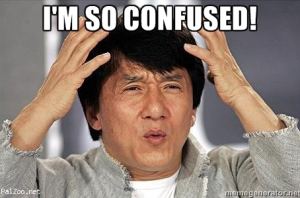
Help me out here. Is she now saying, as reported, that the rationale for defining addiction as a chronic brain disease is that it’s a great way to get people into treatment and make them help them feel better about themselves?
Gosh, and here I thought she and her National Institute “now know” that addiction is a chronic brain disease. And that conclusive brain imaging evidence was the basis of their definition and of their certainty in it.
No disrespect intended to the Director, but questions about this definition, and its basis in truth, cannot be dodged. Because the fact is, 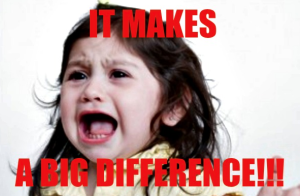
Very simply, the way addiction is defined directly affects how it is diagnosed, the types of treatment that should be considered, and the reasonably achievable treatment outcome.
For example, as a brain disease, addiction would be assumed to have a biological basis that could be targeted with pharmaceuticals or possibly invasive brain procedures.
And further, defining it as a chronic brain disease, clearly establishes that addiction cannot be cured or fully overcome. Therefore, the definition tells us that treatment should not attempt to achieve full recovery.
And what’s more, because expectation directly influences outcome[x], the definition also has an effect on the prospects of recovery, even on the way “recovery” is defined[xi].
The definition influences whether addiction qualifies people for disability, excludes them from certain jobs and more. And finally, how addiction is defined affects the public’s mood or attitude toward addiction, those addicted, their families and all that’s related to it.
 And if that’s not enough, the addiction definition influences legal, judicial and legislative issues related to substance users and suppliers, as well as to schools, families, caregivers, and treatment providers. It directs whether and how insurance might cover medical care, addiction treatment and related care.
And if that’s not enough, the addiction definition influences legal, judicial and legislative issues related to substance users and suppliers, as well as to schools, families, caregivers, and treatment providers. It directs whether and how insurance might cover medical care, addiction treatment and related care.
And let’s not forget, the addiction definition guides the types and priority of scientific research and development efforts to be staffed and funded. For example, in claiming to already know for certain, that addiction is a chronic brain disease to be managed, the industry effectively turns the focus of research away from the possibility of defeating addiction,
toward projects that explore pharmaceutical means of limiting cravings and relapse. Even to investigations into techniques for directly altering the brain area believed to be at the root of this defined disease.
The Real Issue
The fact is that the way addiction is defined crucial.
The definition in place today is the one first introduced nearly 80 years ago. And one thing it does quite effectively is send millions of people to treatment for chronic addiction, just as the Director wished.
The real issue now is that we need an objective, verifiable definition. And that we don’t have.
A word to the NIDA director and to others in the industry, How we define something as serious as addiction cannot be viewed as some sales strategy to get people signed up for a failed treatment method. Nor can we afford to have it used as a kind of self-esteem builder or motivation poster.
No. The stakes are too high for such things. Children are being lost, families are being destroyed, and people are dying.
How addiction is defined matters.
And Director Volkow, the next time you’re pressed to justify your chronic brain disease definition of addiction, please don’t just dodge the question.
In the end, we know that the truth always comes out. And I believe there frankly was more truth in those couple of offhanded comments following the big Dali Lama presentation, than in hours of PowerPoint presentations telling audiences how brain scans verify the disease model of addiction.
So here’s a thought for the leaders in the addiction industry: Think about the far-reaching implications of your entrenched addiction premise, and picture the hundreds of millions of lives it’s affected. Then look at your own research data, but without the usual going in presumptions. Or simply come back here later this week and see what I’ll be laying out in my next post.
In that piece, I’ll also be putting up a straw dog definition 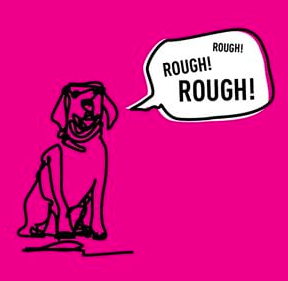 with the data supporting it, and we can see how it stands up to scrutiny. All constructive comments will be welcomed in the hopes that something stronger will come from it.
with the data supporting it, and we can see how it stands up to scrutiny. All constructive comments will be welcomed in the hopes that something stronger will come from it.
Then only after we have a definition that is deemed valid based on the accumulated data, without burden of unsupported assumptions and still open to change based on new and relevant knowledge, the next step will be to outline the treatment strategy designed specifically to address addiction as newly defined, and directed at measurable goals also drawn from the new definition. (phew, long sentence – sorry)
In the meanwhile, I’m hoping (though not holding my breath) that even one addiction industry leader will have the courage to step away from the entrenched chronic brain disease premise, and rather than follow in the ways of those who dodge the tough questions with dismissive remarks, will choose instead to follow another world famous speaker who, when realizing she’d stepped on the wrong side of truth, would acknowledge the error, and simply say,
Gilda Radner as Emily Litella[xii]. We could all learn from her. She made mistakes, recognized them, and said so.
Thank you readers for stopping by, and for your wonderful comments.
[i] National Institute of Health Medline Plus, Drugs, Brains and Behavior, Spring 2007
http://www.nlm.nih.gov/medlineplus/magazine/issues/spring07/articles/spring07pg14-17.html
[ii] PR Newswire Europe, Market Watch, The U.S. Addiction Rehab Industry,
August 4, 2014, http://www.marketwatch.com/story/the-us-addiction-rehab-industry-2014-08-04-52033057
[iii] Service material from the General Service Office,
http://www.aa.org/assets/en_US/smf-53_en.pdf
[iv] Snyder, Bill, Nora Volkow: Two paths to the future; Nora Volkow’s revolutionary approach to addiction. Vanderbilt Medical Center, Vanderbilt Medical Center, ]Published: February, 2006
[v] Marc Lewis M.D, Professor Developmental Psychology, Researcher in Neuroscience. Author. http://www.memoirsofanaddictedbrain.com/connect/nora-volkow-the-disease-model-and-moi/
[vi] Anyone but me think of The Borg here?
[vii] Marc Lewis M.D, Professor Developmental Psychology, Researcher in Neuroscience. Author. http://www.memoirsofanaddictedbrain.com/connect/nora-volkow-the-disease-model-and-moi/
[viii] The Science of Drug Abuse and Addiction, What Is Addiction? NIH National Institute of Drug Abuse, http://www.drugabuse.gov/publications/media-guide/science-drug-abuse-addiction-basics
[ix] NIDA publication, September 2014, Institute director explained NIDA sill retain its existing definition of addiction. http://www.drugabuse.gov/publications/media-guide/science-drug-abuse-addiction-basics
[x] Franklin G. Miller, David Wendler, Leora C Swartzman, Deception in Research on the Placebo Effect
http://www.ncbi.nlm.nih.gov/pmc/articles/PMC1198039/
Drug Efficacy The Effect of Treatment Expectation on Drug Efficacy: Imaging the Analgesic Benefit of the Opioid Remifentanil
http://stm.sciencemag.org/content/3/70/70ra14. abstract
Rosenthal expectance effect. How our expectations effect outcome
http://psych.wisc.edu/braun/281/Intelligence/LabellingEffects.htm
[xi] “What is recovery? A working definition from the Betty Ford Institute”
The Betty Ford Institute Consensus Panel, Journal of Substance Abuse Treatment 33 (2007) 221
[xii] Emily Litella was one of comedienne Gilda Radner’s most loved characters played on Saturday Night Live in the 1970’s. I found this Wikipedia summary to offer the best character summary and sketch examples, while Utube offers many great laughable moments. Like so many people of my generation, I really miss Gilda Radner. http://en.wikipedia.org/wiki/Emily_Litella


